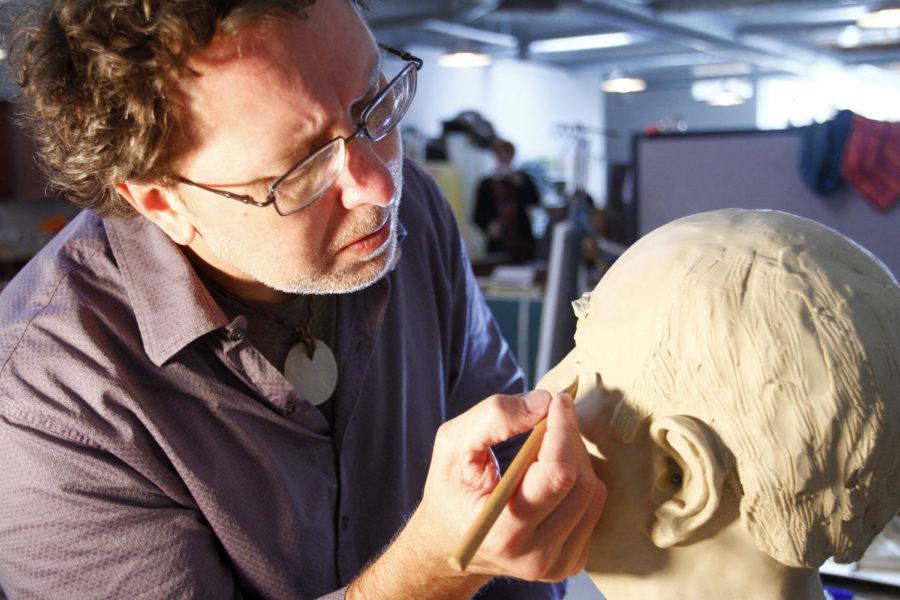Graduate student’s sculpture installed in park
Earle Rock works on his sculpture on Wednesday, Oct. 30, at the Integrated Studio Arts on Main Street.
October 31, 2013
Not many students are given the opportunity to turn their ideas into a public display while still in the school. For Earle Rock, his dreams became reality.
The city of Marion, Iowa, was creating a sculpture trail this past summer and looking for artists to create pieces for Lowe Park. Former ISU lecturer Michael Stanley was contacted and passed the opportunity onto the students in his contemporary sculpture class.
Motivated by math, Rock drew inspiration for his piece from a mathematical formula known as the golden ratio.
“Math plays a lot into how I decide to do what I do,” the graduate student in integrated studio arts said.
The golden ratio is a formula which the Greeks discovered. The golden ratio was created from a rectangle with a set of proportions that look most pleasing because of its duplicating nature. When the radii of the rectangles are connected, a spiral forms, creating the golden ratio.
After learning about the golden ratio in an undergraduate math class, Rock decided to look into it further and discovered that this mathematical principle is a part of many famous art pieces, such as the “Mona Lisa.”
“I wanted to talk about the golden ratio in a three-dimensional form because it usually is represented flat,” Rock said.
The process began with constructing a small model in 3-D, in which he then drew. Next, he wrote a proposal that explained his idea, inspiration, what materials were needed, the approximate budget, how large it would be and the intent of the piece.
Then his piece was accepted. He went to Custom Steel Services in Ames to construct the piece.
To ensure that his piece would work, Rock needed to make sure the math for the piece was correct. He then approached Mikesch Muecke, associate professor of architecture, for help with his sculpture.
“It’s been fun. Although I am in architecture, I am very interested in art, so it was a natural fit,” Muecke said.
Together they worked out the geometry of the sculpture. They determined where support points should go and if the structure would be structurally sound.
Because the piece was to be created out of a flat bar material, they had to figure out how to make the curvature correct and still stay true to the golden ratio.
“I knew I wanted it to be engaging and big enough to grab someone’s attention and give them that ‘wow’ moment,” Rock said.
The finished piece is approximately 9 feet high, 13 feet wide, 21 feet long with the spiral being 33 feet long and curled, allowing viewers to walk in, around and through the piece to offer a different perspective.
“Rock’s ideas cross the traditional boundaries of what an artist is supposed to do, and I am very happy that he reaches out to bring in people from different disciplines for his work,” Muecke said.
A learning experience for Rock, this was his first experience not constructing a piece himself and having to entrust someone else with his vision.
“The biggest thing was letting go of control. While I would prefer to have my hands on the piece, that just simply wasn’t an option,” Rock said.
Rock would like to continue to construct sculptures and pursue other artistic areas or possibly even teach one day.

















